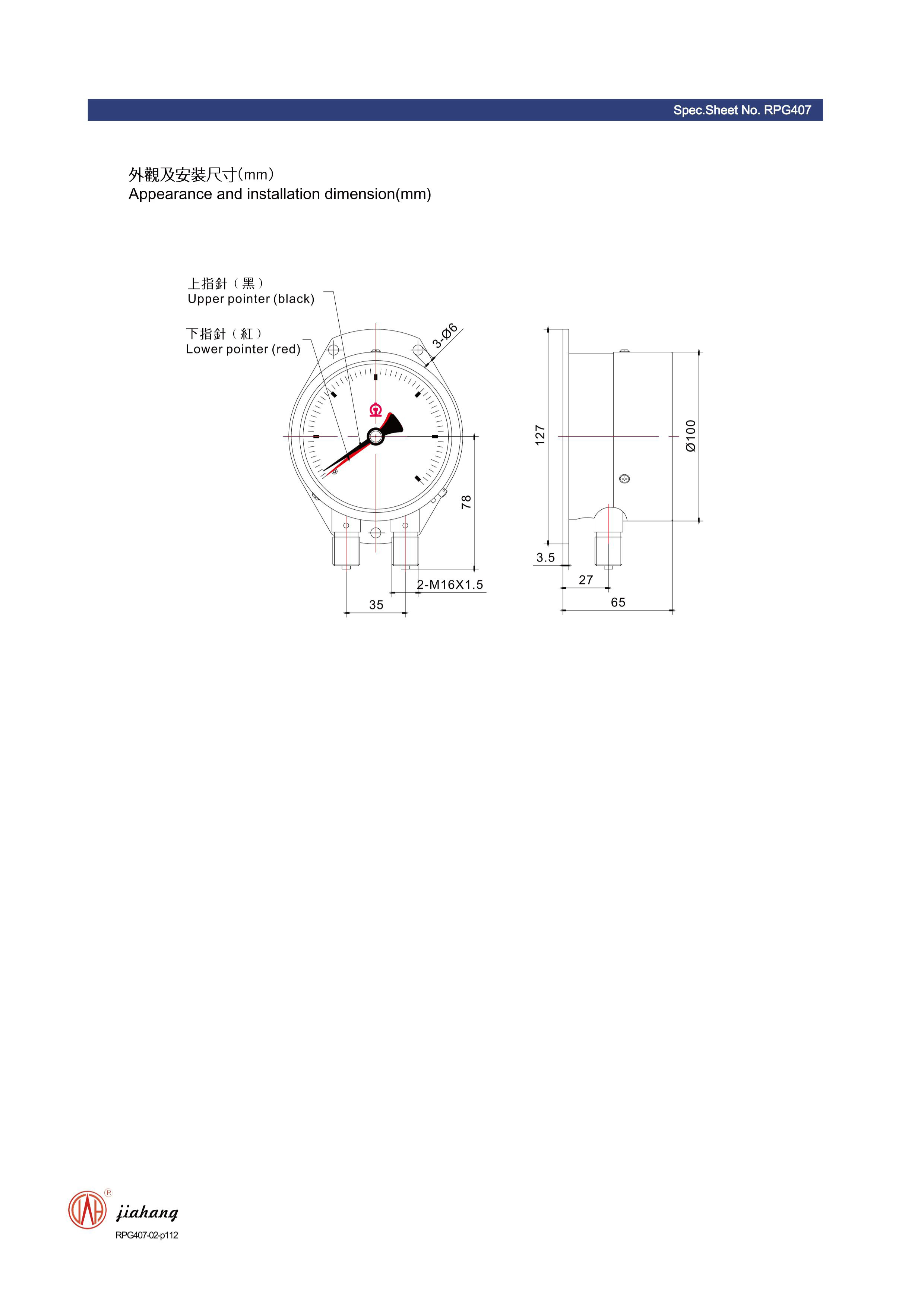
Nov . 06, 2024 01:04 Back to list
Low Range Differential Pressure Gauge Applications and Maintenance Guidelines
Understanding Low Range Differential Pressure Gauges Application and Service
In various industrial processes, maintaining optimal pressure conditions is crucial for ensuring operational efficiency and product quality. One of the essential tools used in monitoring pressure differences across various components of a system is the low range differential pressure gauge. This article elaborates on the functionality, application, and servicing of low range differential pressure gauges, highlighting their significance in process control.
What is a Low Range Differential Pressure Gauge?
A low range differential pressure gauge is a specialized instrument designed to measure small differences in pressure between two points. Unlike standard pressure gauges, which may measure high pressures, these gauges are calibrated to detect very slight variations that could indicate changes in process conditions. The typical range for low range differential pressure gauges is from 0 to 5 inches of water column (WC) or similar units, making them ideal for applications where precision is paramount.
How Do They Work?
The fundamental principle behind a differential pressure gauge involves the use of a diaphragm or sensing element that responds to pressure changes. The gauge has two ports one that connects to the high-pressure side of the system and one that connects to the low-pressure side. When pressure is applied, the diaphragm flexes in response to the difference between the pressures at the two ports, resulting in a measurable movement. This movement is translated into a reading on the gauge, typically displayed in inches of water column (WC) or pascals (Pa).
Applications of Low Range Differential Pressure Gauges
Low range differential pressure gauges find applications across a wide range of industries, including but not limited to
1. HVAC Systems They are used to monitor air and fluid flow in heating, ventilation, and air conditioning systems. Maintaining the right pressure differential ensures efficient functioning and energy utilization.
2. Filtration Systems In industries such as pharmaceuticals and food processing, these gauges are crucial for monitoring the pressure drop across filters. A significant drop might indicate filter blockage, necessitating maintenance to maintain process efficiency.
low range differential pressure gauge service

4. Medical Equipment In medical devices such as ventilators, low range differential pressure gauges help monitor the pressure in respiratory circuits to ensure patient safety and device reliability.
5. Pneumatic and Hydraulic Systems These gauges can monitor small pressure differentials that affect the performance of equipment, ensuring that systems operate within specified parameters.
Maintenance and Service Considerations
To ensure accurate readings and prolong the life of low range differential pressure gauges, regular servicing and maintenance are essential. Here are some recommended practices
1. Calibration Periodic calibration against known standards helps ensure the gauge provides accurate readings. Calibration should be performed at specified intervals or whenever a significant change in the process conditions occurs.
2. Cleaning Dust, dirt, and process contaminants can affect the gauge's performance. Regularly wipe the gauge and connections to prevent buildup that could alter readings.
3. Monitoring for Damage Inspect for any signs of wear, corrosion, or damage. This includes checking seals and connections to ensure they are intact and functioning correctly.
4. Documentation Maintain records of calibration dates, maintenance activities, and any issues encountered. This documentation can be vital for troubleshooting and ensuring compliance with industry standards.
Conclusion
Low range differential pressure gauges play a vital role in numerous industries by providing critical insights into pressure conditions. Their ability to detect minor pressure changes allows for precise control and monitoring of various processes. Regular maintenance and servicing are crucial for these instruments to function optimally, ensuring safety, efficiency, and reliability in operations. Understanding the operation and care of low range differential pressure gauges is essential for professionals tasked with maintaining industry standards and ensuring smooth process flow.
-
High-Precision Mass Diaphragm Pressure Gauge - Reliable & Durable Solutions
NewsJun.10,2025
-
Explain Diaphragm Pressure Gauge Expert Guide, Top Manufacturers & Quotes
NewsJun.10,2025
-
Affordable Differential Pressure Gauge Prices in China Top Manufacturers
NewsJun.10,2025
-
Reliable Water Fire Extinguisher Pressure Gauges for Safety
NewsJun.10,2025
-
Durable Diaphragm Protection Pressure Gauges Get Quote
NewsJun.09,2025
-
WIKA Differential Pressure Gauge with Switch Reliable Monitoring & Control
NewsJun.09,2025
